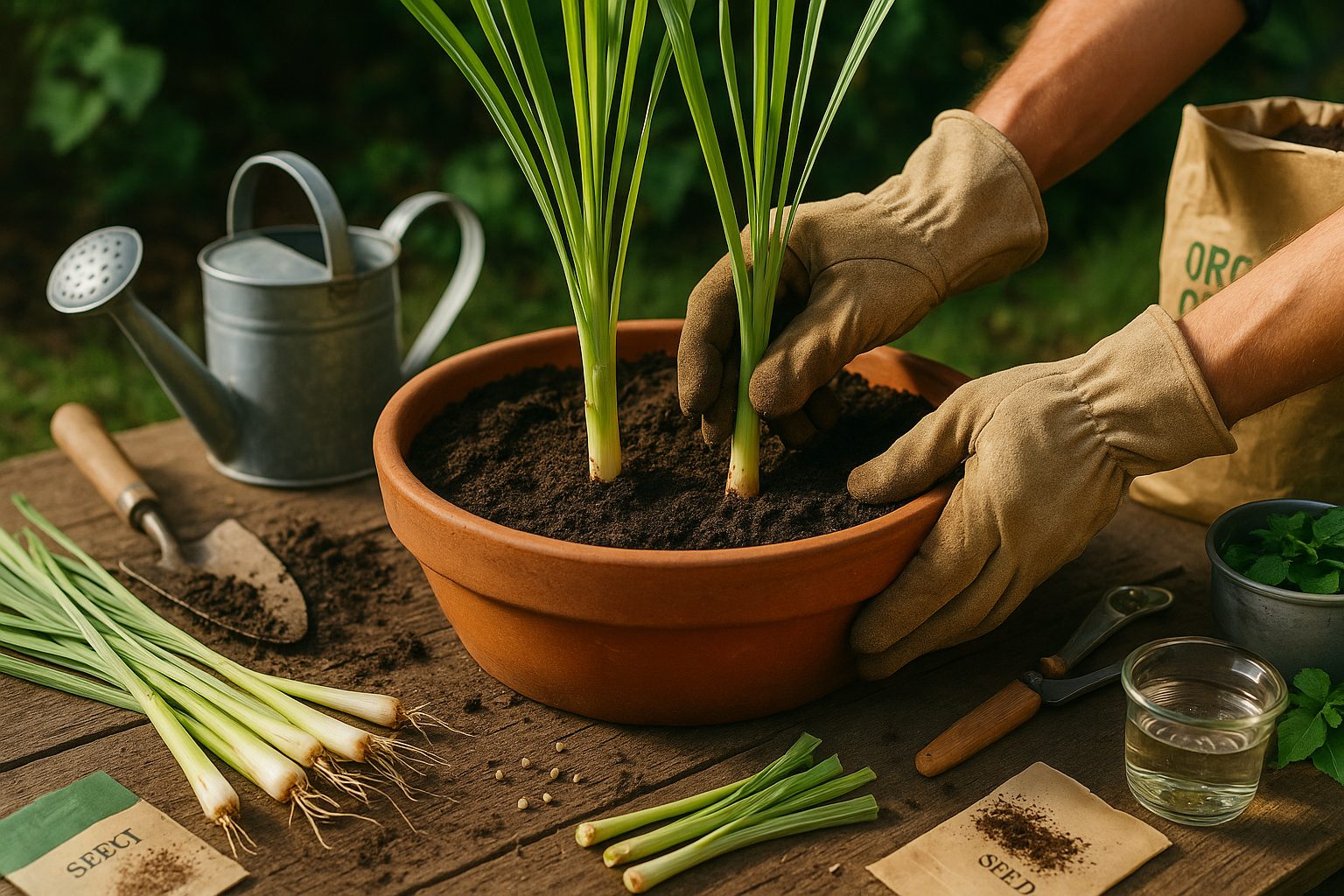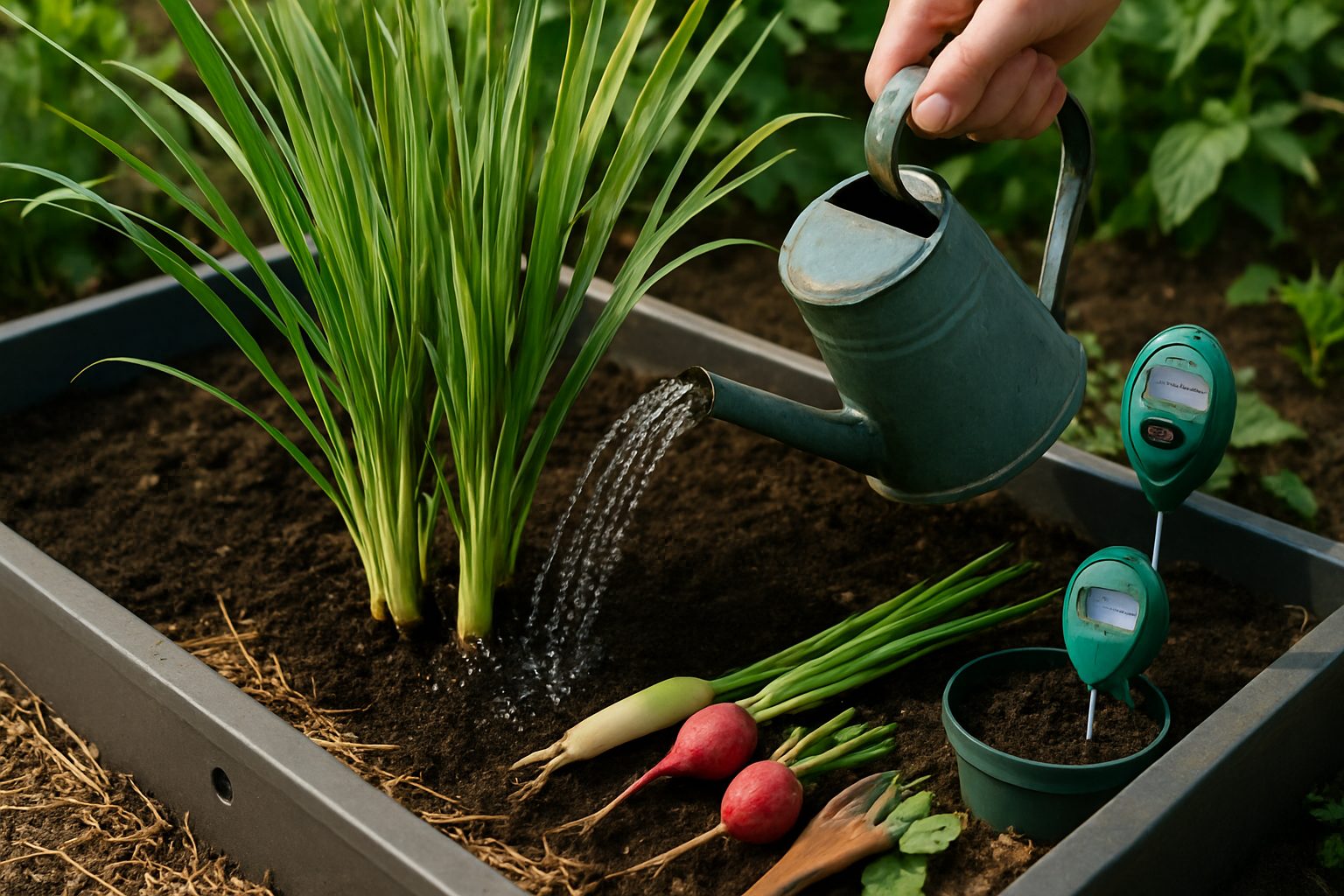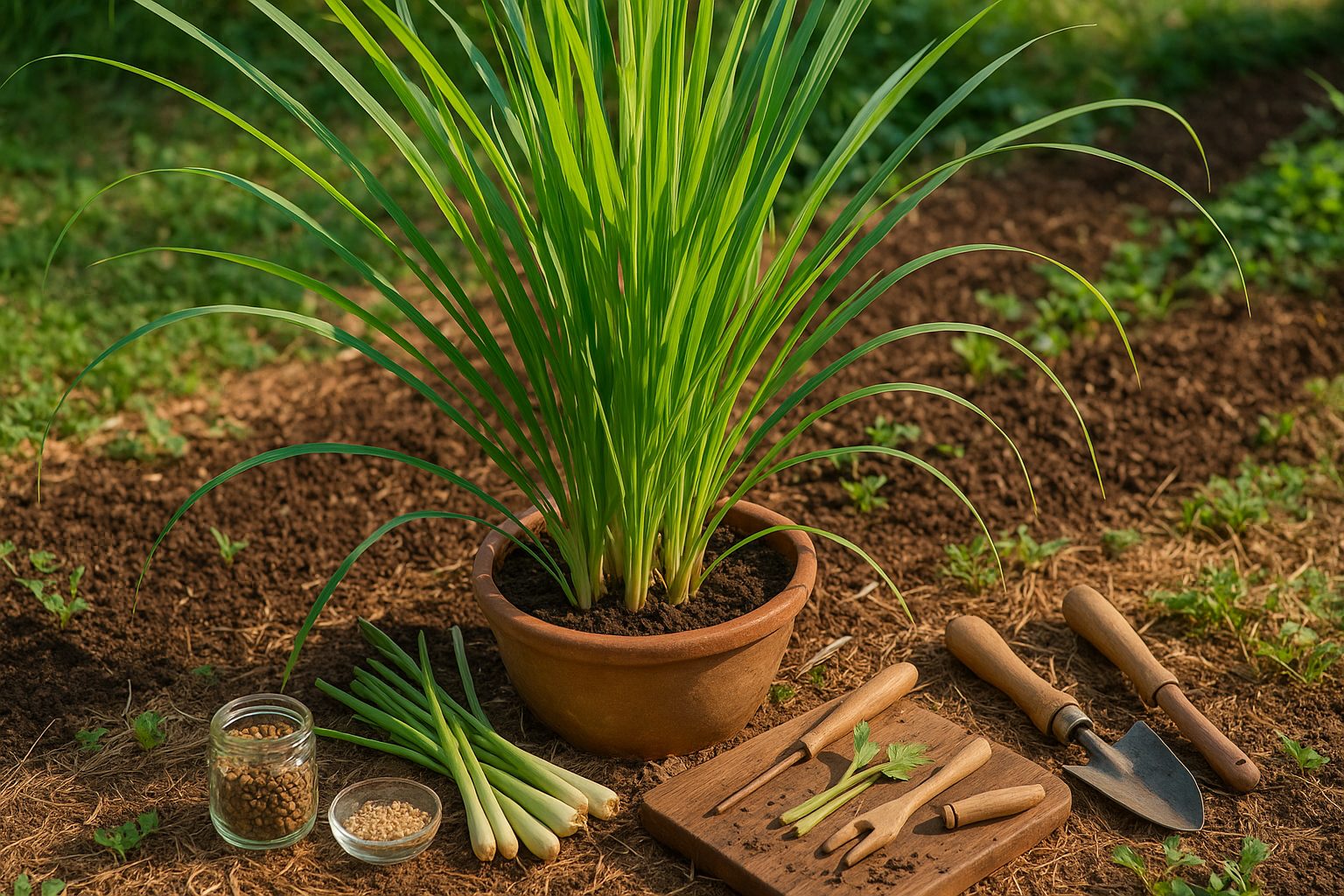Introduction
Watering lemongrass is a key step in keeping this fragrant, versatile herb thriving in your garden or kitchen windowsill. Lemongrass is cherished not only for its citrusy flavor that elevates curries, teas, and marinades, but also for its medicinal benefits and its appeal as a striking ornamental grass. It’s no wonder it has become a favorite among gardeners seeking fresh ingredients and home cooks eager to enhance their culinary creations.
But how often should you actually water lemongrass to keep those tender stalks plump and green? In this article, we’ll break down the basics of lemongrass care, highlight common watering mistakes, and share tried-and-true tips for keeping your plants healthy and productive. Whether you’re growing lemongrass outdoors in beds or indoors in pots, you’ll find easy guidance for lush, vibrant results.
Choosing and Planting Lemongrass

When choosing lemongrass to grow at home, look for healthy stalks or seedlings with bright green leaves and a firm, plump base—avoid anything wilted, browning, or soft. You can start lemongrass from seed, which takes patience since germination can be slow and young plants are delicate at first. For quicker results, division is best: simply buy fresh stalks from a nursery or grocery store and root them in water until small roots form.
Lemongrass thrives in full sun, so pick a spot that gets at least 6-8 hours of direct light. Well-drained, loamy soil rich in organic matter is ideal—heavy clay or soggy soil can cause root rot, so amend your soil with compost and sand if needed.
For planting in a garden bed, make a hole deep enough for the roots and space each stalk about 2 feet apart to allow room for their bushy growth. Backfill, press gently, and water thoroughly.
In containers, use a pot at least 12 inches wide with drainage holes and fill it with a high-quality potting mix; plant the stalks 1 inch deep and keep them evenly moist, but not soggy. In both cases, mulch lightly to help retain moisture and suppress weeds.
Lemongrass grows quickly with warmth, so you’ll soon have a fragrant, edible addition for your kitchen—just remember to water regularly, especially during dry periods.
Watering and Soil Care

Consistent watering is key to healthy lemongrass, as both soggy and parched soil can quickly stress the plant. Aim to keep the soil evenly moist, but never waterlogged—think of the moisture level of a wrung-out sponge. Overwatering can cause the roots to rot, while underwatering can lead to droopy, browning tips and sparse growth.
Signs your lemongrass needs more water include wilted leaves and dry, cracked soil, whereas yellowing or mushy stems often point to too much moisture. Remedy water stress by adjusting your watering schedule according to the weather; in hot summers, lemongrass may need watering every couple of days, while during cooler, damper spells, you can ease up.
Well-draining soil is critical, so consider mixing in sand, perlite, or compost to improve drainage and provide essential nutrients. If you’re gardening in heavy clay soil, try growing lemongrass in raised beds or containers with a quality potting mix.
Mulch around the base with straw or bark to retain moisture and suppress weeds, but keep it a few inches away from the stems to avoid rot. Checking soil moisture with your finger or a moisture meter can help you avoid guessing games, ensuring you meet your lemongrass’s needs for lush, flavorful growth.
Light, Temperature, and Climate Needs
Whether you’re growing plants indoors or outdoors, understanding their specific light, temperature, and humidity needs is crucial for healthy growth. Most houseplants thrive in temperatures between 65–75°F (18–24°C) during the day and a bit cooler at night, while outdoor plants may have more varied requirements. Always check your plant’s tag or do a quick search to be sure.
Humidity is also key; many tropical varieties prefer humidity levels above 50%, which you can achieve with a room humidifier or by misting the leaves regularly.
For sunlight, most indoor plants like bright, indirect light, so placing them near east- or north-facing windows works well. Outdoor plants often require full sun—generally 6–8 hours a day—but some, like ferns or hostas, do best in partial shade.
Extreme temperatures, both hot and cold, can stress plants. During heatwaves:
- Move pots to shaded areas
- Water early in the morning
- Mulch the soil to keep roots cool
When frost threatens:
- Cover outdoor plants with cloths
- Bring potted ones inside
For heavier relocations, choose lightweight containers and use plant caddies with wheels. By closely monitoring your plant’s climate needs and adapting to seasonal changes, you’ll protect your greenery year-round.
Fertilizing and Growth Boosting Tips
Fertilizing your plants at the right time can make all the difference in their growth and vigor. Start by feeding early in the growing season, just as new growth appears—this is when your plants are hungry and ready to take off.
Organic fertilizers, like compost or well-rotted manure, not only provide nutrients but also improve soil health over time, making them great for gardeners who want a sustainable option. Synthetic fertilizers, meanwhile, deliver nutrients quickly and are ideal if you need a fast boost, but they don’t enrich the soil in the long run.
For best results, follow label instructions whether you’re using granular or liquid feeds, and avoid over-fertilizing, which can “burn” roots.
To encourage bushier, sturdier plants, try pruning techniques such as pinching off the tips of young shoots. This prompts the plant to send out new side branches, resulting in thicker stalks and fuller growth.
Prune during late spring or early summer when plants are actively growing, and always use clean, sharp tools.
Seasonally, remember that plants need less food in fall and winter as growth slows, so taper off fertilizing and focus on protecting roots with mulch to prepare for the next surge in spring.
Common Problems and Solutions
Dealing with common plant problems like aphids, spider mites, fungus, and root rot can feel overwhelming, but there are effective, non-toxic ways to keep your plants healthy.
For pests such as aphids and spider mites, start by regularly inspecting the undersides of leaves—tiny clusters of dots or fine webbing are clear signs. A strong spray of water can often rinse these pests away, or try making a gentle soap solution (one teaspoon of mild dish soap in a quart of water) and spraying it on affected areas.
Fungal issues, including mold and powdery mildew, often appear as white or gray patches on leaves. Improve airflow by spacing plants properly and watering at the soil level early in the day to let leaves dry out.
If you notice fuzzy mold or a musty smell in the soil, cut back on watering and remove affected leaves to prevent root rot. Yellowing leaves may signal overwatering or nutrient deficiencies—check soil moisture before each watering and consider adding an organic fertilizer.
Stunted growth and scorched or brown leaf edges can come from too much direct sunlight or fertilizers; move your plant to a shadier spot, and avoid fertilizing more than once a month.
Regular cleaning of leaves and using well-draining pots help prevent many issues before they start.
By staying observant and acting quickly, you can often prevent small issues from becoming big headaches while keeping your plants lush and thriving.
Harvesting and Using Lemongrass
For the best flavor and a thriving plant, harvest lemongrass when the stalks are at least half an inch thick and about a foot tall. A good rule is to pick them once they feel firm at the base but before the outer leaves turn tough and dry.
Use a sharp, clean knife to cut each stalk near ground level; this encourages new growth while preserving the rest of the plant’s energy. Immediately after cutting, peel away the tough outer layers and rinse the stalks under cool running water to remove dirt and debris.
Store cleaned lemongrass by wrapping the stalks in a damp paper towel, sealing them in a zip-top bag, and refrigerating them for up to two weeks. For longer storage, you can chop or slice the stalks and freeze them in airtight containers.
In the kitchen, slice fresh lemongrass thinly for stir-fries, curries, and soups, or bruise whole stalks with the back of a knife to release their citrusy aroma before adding them to simmering broths or teas.
Beyond cooking, steep lemongrass in hot water with honey and ginger for a refreshing herbal tea, or use it to infuse homemade cleaners for a naturally uplifting scent throughout your home.
Conclusion and Further Resources
Growing lemongrass is rewarding and straightforward when you choose a sunny spot, keep the soil consistently moist, and harvest regularly to encourage fresh growth. Remember to watch for pests and don’t hesitate to trim the stalks for the best results.
Don’t be afraid to experiment—lemongrass can thrive both in the garden and in pots on a sunny balcony.
For more detailed advice, check out resources like local agricultural extensions, the RHS gardening website, or specialty gardening YouTube channels.
By staying curious and attentive, you’ll quickly gain confidence in nurturing healthy, flavorful lemongrass at home.
